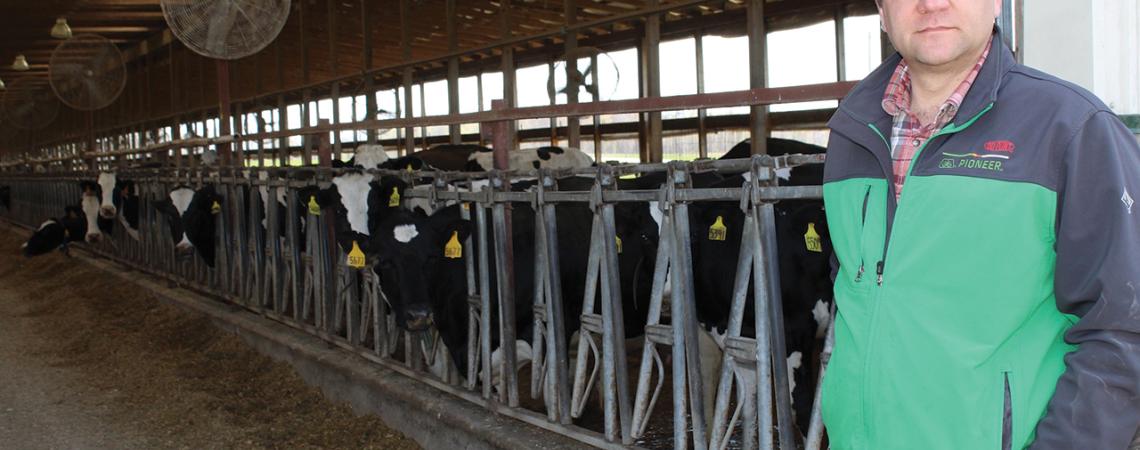Chris Weaver, chief operating officer at Bridgewater Dairy in Montpelier, shows part of his herd that now helps produce electricity as well as milk.
Bridgewater Dairy, a family farm in Montpelier, Ohio, has 3,000 dairy cows that produce 30,000 gallons of milk daily. They also produce an estimated 15 million gallons of manure each year.
A decade ago, Chris Weaver, Bridgewater Dairy’s chief operating officer, started turning his farm’s animal waste into something valuable — electricity — by installing an anaerobic digester.
“I wanted to manage the animals’ manure with an eye to helping the environment,” Weaver says. “I also wanted to improve the comfort of my cows. An anaerobic digester lets me do both.”
An anaerobic digester breaks down organic material, such as animal waste, in a sealed, oxygen-free vessel, extracting methane that can be used to fuel an electric generator. Bridgewater’s digester has the capacity to generate 1.2 MW of power. It also drastically cuts down on the manure smell, flies, and risk of water contamination.
Weaver says the dairy didn’t build an anaerobic digester to go “off the grid”; the operation still receives all of its electricity from North Western Electric Cooperative. But it sells all the electricity it produces to Buckeye Power, the generation and transmission cooperative that provides wholesale electricity to all of Ohio’s electric co-ops. Three other farms on co-op lines do the same: Wenning Poultry in Mercer County (Midwest Electric in St. Marys), Ven Erk Dairy of Paulding County (Paulding Putnam Electric Cooperative), and Renergy in Monroe County (Consolidated Electric Cooperative in Mount Gilead). Combined, the four have a capacity of about 3.3 MW.
“Bridgewater Dairy has been an excellent member, one of our best,” says Darin Thorp, president and CEO of North Western Electric Cooperative. “We helped them get started by supplying the distribution lines, meters, and switch gear.”
None of the cost of the project, however, was passed on to other co-op members. “That was important,” he says. “Each member needs to pay their fair share so that one member doesn’t cross-subsidize another.”
Thorp says one reason renewable electricity from digesters is so attractive is that it is a baseload resource, meaning it can run around the clock, 365 days a year, as long as it has a steady fuel supply. Solar- and wind-powered generators, on the other hand, don’t generate electricity when the sun goes down or the wind stops blowing.
“Anaerobic digesters may not be as fancy or appealing as wind and solar,” Weaver says. “For some people, power from poop carries an ‘ick’ factor compared to wind and solar. But digesters have an important role to play in rural America.”
John Egan is president of Egan Energy Communications.









